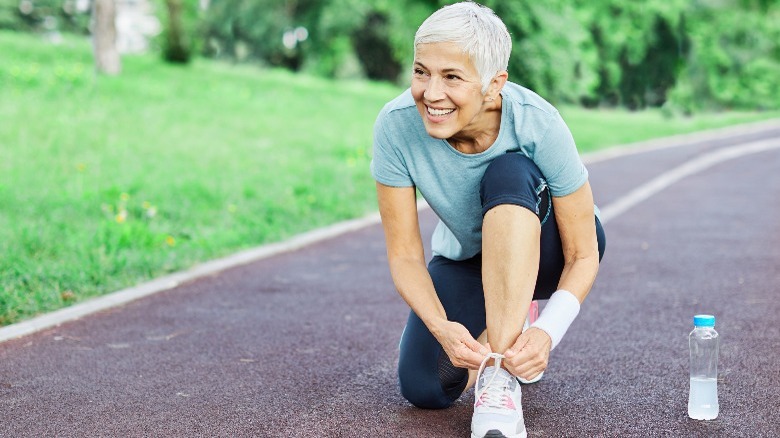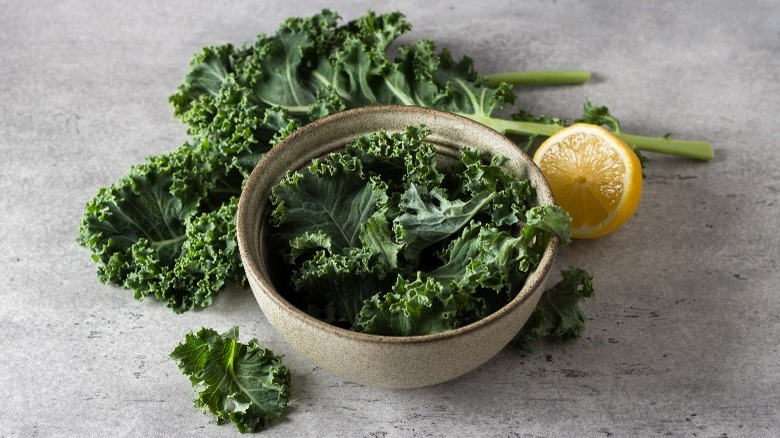Why Female Runners Have Lower Bone Densities
If you're a female who loves to run, whether it be 5K races, half marathons, full marathons, or you simply run for recreational purposes, you're in good company. Based on a large study of marathons, over 45% of marathoners in the United States are women, according to RunnerClick.
As a regular form of physical activity, running is an effective way to get in cardio, build up muscle strength, help get better sleep, reduce the risk of cardiovascular disease, and even help improve your memory, according to WebMD. In addition, running is a weight-bearing exercise, which means running can help you build bone density or bone mass. And the faster the running pace, the more you can potentially build up your bone density.
Maintaining bone density is important because it is a key factor in supporting bone health. When you have healthy bone density, this means the inside part of your bones contains adequate levels of calcium and other key minerals, per Harvard Health Publishing.
However, while running can support bone health, if you are someone who has been diagnosed with low bone density, running can put you at greater risk for stress fractures and other bone injuries, per Current Sports Medicine Reports.
These female runners are at higher risk for bone injuries
When we're young, our bones are stronger and our body is designed to rebuild new bones. However, as we age, our body loses the ability to replace bone as quickly as when we were in our 20s or 30s. As a result, by the time you hit your 40s and 50s, your bone density has already decreased. Post-menopausal women, in particular, are even more susceptible to accelerated bone loss. Women can lose up to one-fifth of their bone density within roughly five to seven years after menopause, per National Council on Aging (NCOA).
Low bone density, or osteopenia, is a potential warning sign for osteoporosis. To determine if you have low bone density, consult your doctor about getting a bone density test, which involves getting an X-ray or a computed tomography (CT) scan. The results will provide a measurement of your bone mass. If your bone mass has decreased, this would suggest that you are more prone to breaking a bone, per Johns Hopkins Medicine.
The bone density test results contain two numbers: a T-score and a Z-score. If your T-score is at or above -1, your bone density is normal. If it falls between -1 and -2.5, this is a warning sign for osteoporosis, while a -2.5 score and below indicate that you probably have osteoporosis. Your Z-score compares your bone density with people within your age group, sex, and weight range, along with other applicable categories, per Mayo Clinic.
Here are some ways to manage your bone density
Your bone density is predetermined based on your genetics, so you can only develop so much bone mass, which typically reaches its peak in your twenties, Alana Serota, M.D. tells Hospital for Special Surgery. Additionally, you can't add to your bone density once you begin to enter middle age. Even so, it's not all bad news. There are ways to maintain the bone mass you have and also keep osteoporosis at bay.
According to Women's Running, one way you can prevent bone injuries and osteoporosis is by getting an adequate amount of certain vitamins and minerals. For instance, getting 600 IU of vitamin D daily can maintain bone mass and reduce the chances of calcium loss. And you don't need to only drink traditional milk for calcium intake. For instance, soy milk is an excellent alternative to support bone health. As far as foods that are rich in calcium, enjoy daily servings of kale, broccoli, and other green vegetables. Also, look at cereal package labels. Oftentimes cereal will be fortified with calcium.
If you're over 50 and have osteoporosis, running may be unsafe because you are at a greater risk of breaking a bone. Power walking or brisk walking may be the better option. However, before lacing up for any physical activity, ask your healthcare provider for guidance about the safest forms of exercise based on your situation, per Bone Health & Osteoporosis Foundation (BHOF).



